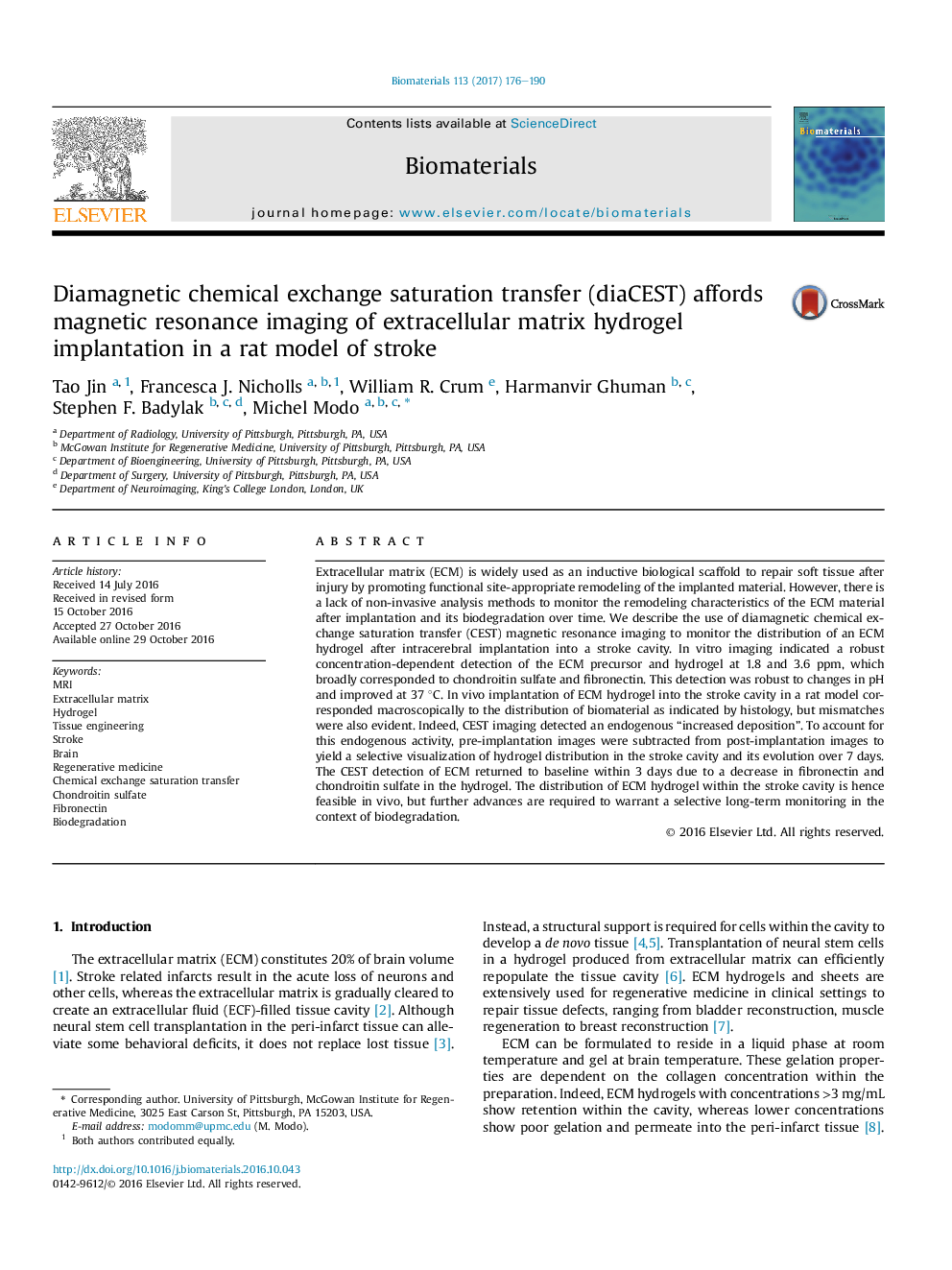| کد مقاله | کد نشریه | سال انتشار | مقاله انگلیسی | نسخه تمام متن |
|---|---|---|---|---|
| 6451045 | 1416154 | 2017 | 15 صفحه PDF | دانلود رایگان |

Extracellular matrix (ECM) is widely used as an inductive biological scaffold to repair soft tissue after injury by promoting functional site-appropriate remodeling of the implanted material. However, there is a lack of non-invasive analysis methods to monitor the remodeling characteristics of the ECM material after implantation and its biodegradation over time. We describe the use of diamagnetic chemical exchange saturation transfer (CEST) magnetic resonance imaging to monitor the distribution of an ECM hydrogel after intracerebral implantation into a stroke cavity. In vitro imaging indicated a robust concentration-dependent detection of the ECM precursor and hydrogel at 1.8 and 3.6 ppm, which broadly corresponded to chondroitin sulfate and fibronectin. This detection was robust to changes in pH and improved at 37 °C. In vivo implantation of ECM hydrogel into the stroke cavity in a rat model corresponded macroscopically to the distribution of biomaterial as indicated by histology, but mismatches were also evident. Indeed, CEST imaging detected an endogenous “increased deposition”. To account for this endogenous activity, pre-implantation images were subtracted from post-implantation images to yield a selective visualization of hydrogel distribution in the stroke cavity and its evolution over 7 days. The CEST detection of ECM returned to baseline within 3 days due to a decrease in fibronectin and chondroitin sulfate in the hydrogel. The distribution of ECM hydrogel within the stroke cavity is hence feasible in vivo, but further advances are required to warrant a selective long-term monitoring in the context of biodegradation.
267
Journal: Biomaterials - Volume 113, January 2017, Pages 176-190